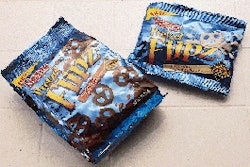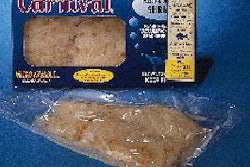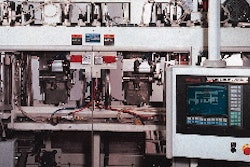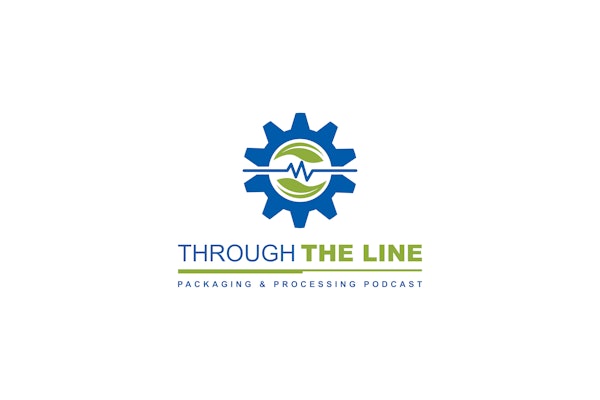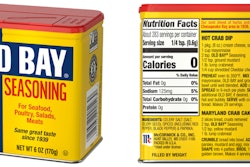I have my doubts. Wider wheel stance and cab forward design are interesting, but do they really change everything? A large, all-plastic family car selling for under $15ꯠ that carried a 10-year, 150ꯠ mile bumper-to-bumper warranty - now that would change everything...that would be revolutionary! To me, most of the features being touted by the automobile industry have a superficial, business-as-usual character to them. On the other hand, the packaging business is changing everything. Unlike the automotive industry, this business is never content with mere cosmetic alterations to the status quo. A close reading of the ads and editorial in this publication reveals that packaging is continuously reinventing itself. It builds aluminum cans to replace steel ones. Multilayer plastic containers phase out (or are phased out by) composites and monolayer plastics. Packaging machinery builders develop expertise in vertical specialties, then look upstream and downstream to spread their knowledge beyond the boundaries of their core specialties. Packaging is always pushing to improve - lighter, faster, more secure, simpler, less expensive, more efficient. Generations of packaging developments build upon the framework of preceding art, science and technology. In the frozen meals category for instance, molded ovenable fiber trays replaced rigid plastic plates which supplanted crimp-formed paperboard trays which knocked out crimp-formed aluminum trays. But the vibrancy of packaging keeps the supplanted developments from dying, as they find new uses in ever-widening markets. Computers and electronics For their part, packaging machinery manufacturers have taken much of the time and guesswork out of set-ups and changeovers. Computer smarts and electronic precision are helping frazzled packaging managers keep their production lines operating at peak efficiencies. Systems and materials are abler and some of the latest technologies are bringing down operational and service call costs. On-board, multilingual, computer touchscreen diagnostics are commonplace and a growing number of packagers now have instant, around-the-clock interactive Internet access to the technical service managers and engineers who built their systems. ISO 2000+ certification of machinery, material and container manufacturing operations is growing. The once clear boundaries separating the packaging interests of glass, metal, paper and plastic materials have been obliterated by generations of cross-material packaging developments. Published packaging glossaries have been made obsolete by packaging changes that add, alter and expand definitions faster than publishers can edit and revise them. The definition of glass has been expanded in recent years to include silica coatings on flexible and semi-rigid containers. "Can" no longer just means a cylindrical, straight-walled metal container, as paper, plastics and composite cans (not to mention contoured wall and non-cylindrical footprint versions) abound. Plastics are combining with all other packaging materials and improving their performance. For glass there are plastic coatings, labels, closures and liners. Papers draw strength and water resistance from plastics as well as organoleptic barriers, seal efficacy, gloss, scuff resistance and a host of other properties. Plastics prevent metal closures from backing off during shipment and prevent unwanted metallic reactions of foods and beverages in metal cans. To the traditional categories of bags, bottles, boxes, cans, cartons, closures, cups, labels, etc., packaging suppliers have added such categories as child-resistant/elder-friendly blisters, fitments, holograms, thermochromic inks, zippers, dispensers, slip sheets, stand-up pouches, pump dispensers and an array of container and packaging choices that defies characterization as anything more specific than "specialty packaging." Improved economics Not only are suppliers offering stronger, lighter, more appealing containers produced, conveyed, filled, capped, labeled and cased on faster, more agile lines, but the economics of those packages and systems is improving. There are more fundamental changes going on, too. Old paradigms are dissolving. Venerable glass container maker Ball Corp. (Muncie, IN) no longer makes glass bottles and jars; plastic containers is now its passion. Alcoa (Pittsburgh, PA), the full name of which is the Aluminum Company of America, until recently made both plastic and aluminum closures. Then it sold off one of the operations to Silgan Holdings, Inc. (Stamford, CT). Guess which one. Similarly, American National Can Co. (Chicago, IL) no longer makes food cans. And Reynolds Metals Co. (Richmond, VA), which conceived the two-piece aluminum beverage can that has succeeded in totally wiping out the steel beverage can in the U.S., now appears poised to get out of the can business. The brown box maker many of us remember as Packaging Corp. of America has assumed a new identity as Pactiv Inc. (Evanston, IL). It now is a specialty packaging producer with interests far beyond brown boxes, including plastic films, molded containers and protective packaging materials. Elsewhere, ICI plc (London, England) is turning over its polyester intermediates, resin and films business to DuPont Co. (Wilmington, DE), which promises to further improve efficiencies and lower PET packaging resin costs with two new polymerization techniques and more than 100 recent patents in the field. For packaging specifiers, the continuous reinvention of packaging presents unparalleled opportunities to improve production and distribution control, reduce the time it takes to get product to market and lower costs. It also presents a daunting challenge. How well you understand and define your current and future packaging needs continues to be an important predictor of packaging success. But, increasingly, your success will depend on how well you understand and can capitalize on the changing structure and technologies of packaging. c Ben Miyares is editor and publisher of the newsletter Packaging Management. He may be reached at 31408 Narragansett Lane, Bay Village, OH 44140. Telephone: 216/892-0998; Fax: 216/892-0208; e-mail: [email protected].





